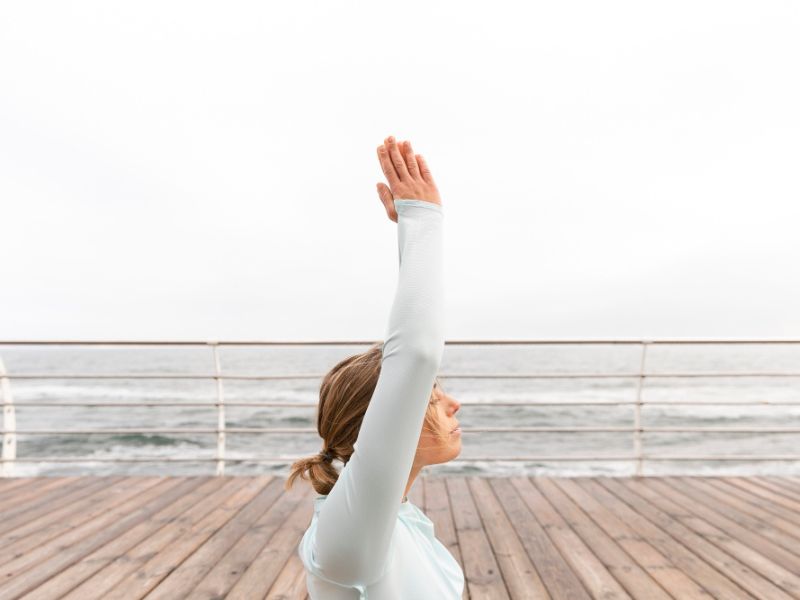
Meditation on the move, often referred to as “walking meditation,” is a practice that combines the principles of mindfulness and meditation with the act of walking. It’s a way to cultivate awareness, focus and a sense of presence while you’re in motion.
Meditation is beneficial for overall wellbeing as it reduces stress, enhances focus, fosters emotional balance and promotes self-awareness. This practice improves mental clarity, lowers anxiety and contributes to better sleep quality. Through regular meditation, individuals can cultivate resilience, compassion and a deeper connection between mind and body, leading to a more relaxed and fulfilling life.
Here’s a guide to practising meditation on the move:
Choose your location
Find a quiet and safe place to walk, preferably free from distractions and traffic. This could be a park, a garden, a quiet street or any area where you can walk comfortably.
Posture and pace
Begin walking at a natural and comfortable pace. Keep your back straight but not rigid. Let your arms hang naturally by your sides. Find a pace that feels relaxed and sustainable.
Focus on sensations
Tune into the sensations in your body as you walk. Feel the contact of your feet with the ground, the movement of your legs and any other sensations that arise. Be present with each step. Being barefoot would help the grounding process.
Mindful breathing
Pay attention to your breath as you walk. You can sync your steps with your breath, such as taking a step with each inhale and exhale. Alternatively, you can simply observe your breath without trying to change it.
Observing your surroundings
While maintaining awareness of your bodily sensations, also take in the environment around you. Notice the sights, sounds and smells without getting caught up in them. This can help ground you in the present moment.
Stay present
Your mind might naturally start to wander. When this happens, gently bring your focus back to your breath, your body and your surroundings. It’s okay for your attention to wander; the key is to gently guide it back without judgment and distractions.
Walking with intention
Set an intention for your walking meditation. It could be to cultivate gratitude, find inner calm or simply to be present. Keep reminding yourself of this intention as you walk.
Duration
You can practice walking meditation for as long as you’d like. It could be a short ten-minute walk or a longer stroll. The duration doesn’t matter as much as the quality of your presence during the practice.
Transitioning
If you’ve been practising seated meditation before, transitioning to walking meditation can be a wonderful way to extend mindfulness into your everyday activities.
Flexibility
Meditation on the move can take many forms. You can adapt the practice to suit your needs and preferences. Some people enjoy a slower, contemplative walk, while others might integrate mindfulness into their daily commute. It’s so flexible, you can practise it on your lunch break.
Meditation on the move is a versatile practice that allows you to bring mindfulness into your daily life, enhancing your awareness and helping you find moments of tranquillity even in the midst of activity.
Read more about meditation and mindfulness below.
Mindful | Headspace | Everyday Health | NHS | Mental Health








